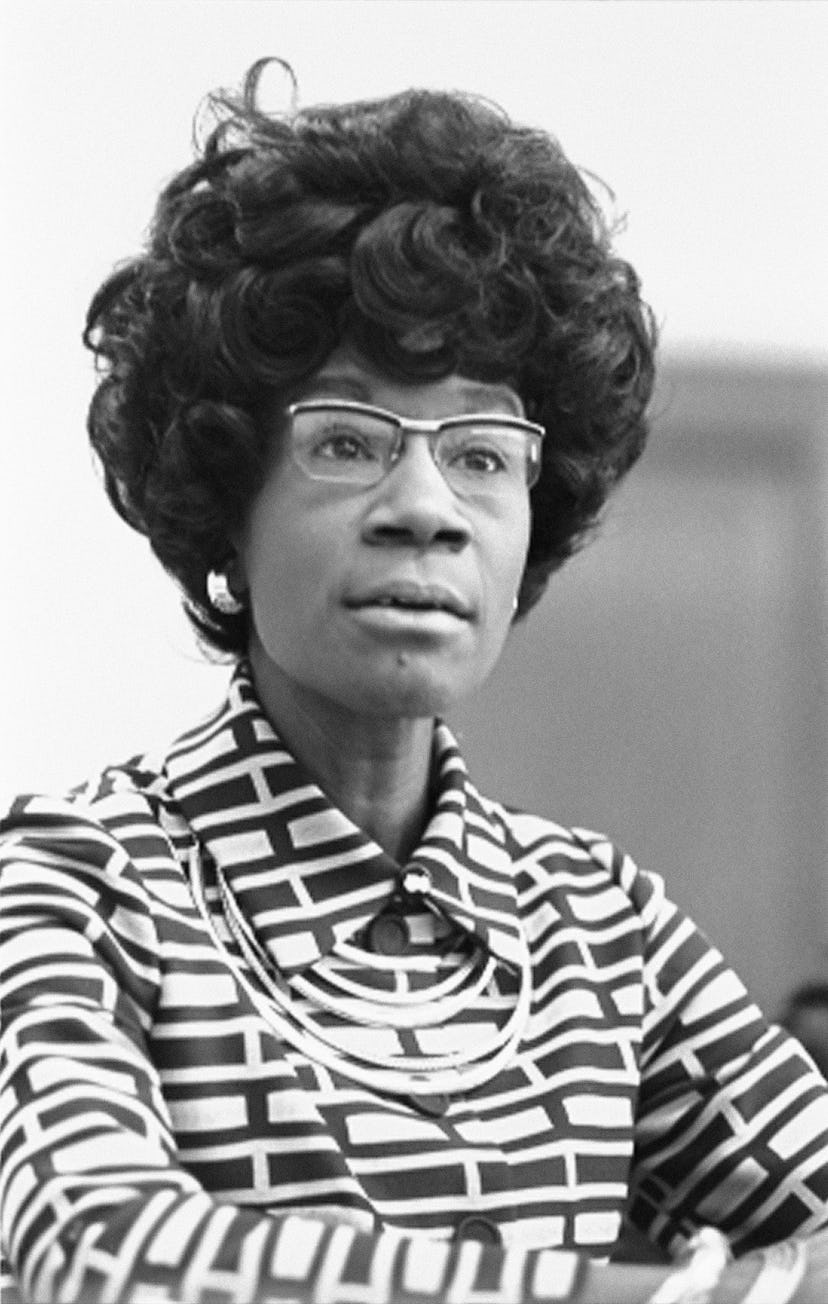Shirley Chisholm, Unsung Style Hero of the Women’s Liberation Movement
Shirley Chisholm, the first black woman to be elected to congress and first black person to run for president, was a style icon in her own right.

Second wave feminism relied on the efforts of countless women to revolutionize the ‘70s. But all too often, contemporary culture glorifies only one of them: Gloria Steinem, the thin, white, and fashionable figurehead who emerged as the movement’s most palatable face. Now, the FX series Mrs. America is attempting to correct that oversight—starting with Shirley Chisholm, one of the movement’s most egregiously overlooked activists.
In nine episodes, Mrs. America tells the true story of Phyllis Schlafly (played by Cate Blanchett) and the rise of the anti-feminist conservative far right in American politics alongside the popularization of the feminist women’s liberation movement led by Steinem, Shriley Chisholm (played by Uzo Aduba), Betty Friedan, Brenda Feigen-Fasteau, Bella Abzug, and Jill Ruckelshaus.
Chisholm gave her now-famous speech, “For the Equal Rights Amendment,” on August 10, 1970, which supported the ERA and argued for equal legal rights for all American citizens. Schlafly led the conservative opposition, arguing that housewives would be placed at a disadvantage and women would be drafted into the military if the ERA were to be ratified. As the women’s movement gained popularity, the Equal Rights Amendment was reintroduced for ratification by more states beginning in 1971.
Chisholm, who died in 2005 and was posthumously awarded the Presidential Medal of Freedom by Barack Obama in 2015, was the first black woman elected to the United States Congress in 1968, the first black major-party candidate to run for president in 1972, and the first black woman to participate in a presidential debate. Her politics exemplified the basic tenets of the feminist movement (her presidential slogan was “Unbought and Unbossed”), but unlike Steinem’s, Chisholm’s sartorial choices are often overlooked in our recollection of the era. Loud patterns, eclectic prints, and large pussy bows amplified Chisholm’s image alongside her voice, making her an unsung style hero of the decade.
Shirley Chisholm announces her entry for Democratic nomination for the presidency, at the Concord Baptist Church in Brooklyn, New York. Photo courtesy of Getty Images.
Shirley Chisholm poses with her staff in her Washington, D.C. office in 1970. Photo courtesy of Getty Images.
Shirley Chisholm holding a copy of The Congressional Record in 1970. Photo courtesy of Getty Images.
Shirley Chisholm campaigning in the 1972 Democratic National Convention, for which she won 151 delegate votes. Photo courtesy of Getty Images.
Students at Mills College talk with Shirley Chisholm. Photo courtesy of Getty Images.
Shirley Chisholm attends funeral services for Adam Clayton Powell in 1972. Photo courtesy of Getty Images.
Lt. Gov. George Brown and Shirley Chisholm attend a testimonial dinner in January 1979. Photo courtesy of Getty Images.
Shirley Chisholm endorses Senator George McGovern at the Democratic National Convention in Miami Beach, after losing her bid for Democratic presidential nomination in July 1972. Photo courtesy of Getty Images.
Uzo Aduba as Shirley Chisholm in Mrs. America. Photo courtesy of FX.
Uzo Aduba as Shirley Chisholm in Mrs. America. Photo courtesy of FX.
Shirley Chisholm and Frances Tarlton “Sissy” Farenthold on the cover of January 1973 cover of Ms. magazine. Photo courtesy of Ms. magazine.
1972 Presidential Campaign Poster. Image courtesy of Wikimedia Commons.
Miami Beach during the Republican and Democratic conventions of 1972. Featuring Ted Kennedy, Shirley Chisholm, George Wallace, Henry Kissinger, Phyllis Schlafly, John Wayne, Barry Goldwater, Frank Sinatra, Chad Everett, Sammy Davis Jr., and Charlton Heston.
Related: Mrs. America: The Real Life People Played By Cate Blanchett, Uzo Aduba and More